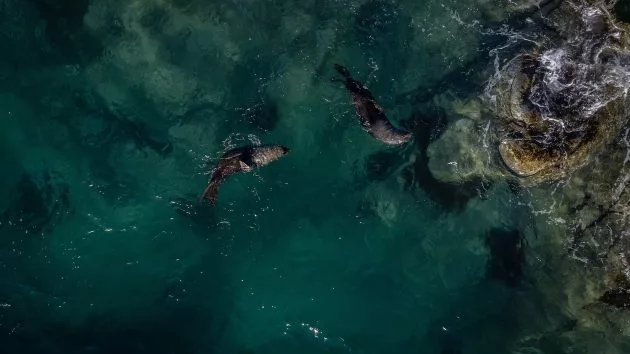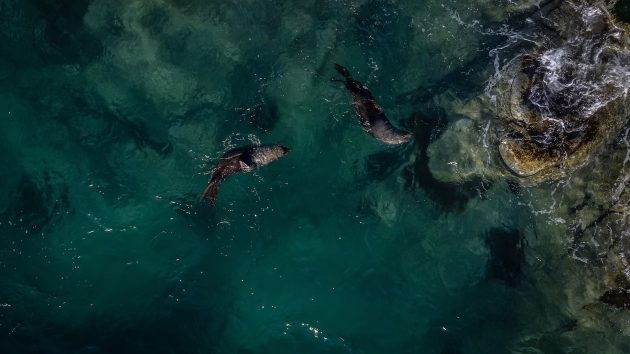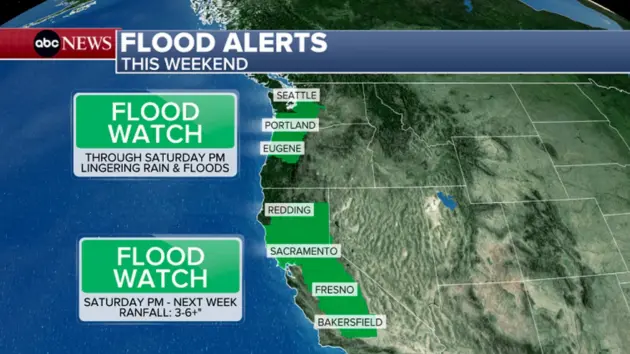
(NEW YORK) — Warming waters are causing the colors of the ocean to change — a trend that could impact humans if it were to continue, according to new research.
Satellite data shows that ocean waters are getting greener at the poles and bluer toward the equator, according to a paper published Thursday in the journal Science.
The change in hue is being caused by shifting concentrations of a green pigment called chlorophyll, which is produced by phytoplankton, Haipeng Zhao, a postdoctoral researcher and lead author of the paper, told ABC News.
Phytoplankton are photosynthetic marine organisms. As algae, phytoplankton has photosynthetic pigments, which absorb green light and cause the waters around it to appear primarily green, Susan Lozier, dean of the College of Sciences at the Georgia Institute of Technology and co-author of the paper, told ABC News. Where phytoplankton are absent, the water appears blue.
The researchers analyzed satellite data on the open ocean collected from 2003 to 2022 by a NASA instrument that combs through the planet every two days to measure light wavelength, according to the paper.
The presence of chlorophyll in open ocean is a proxy for concentrations of phytoplankton biomass. The colors indicate how chlorophyll concentration is changing at specific latitudes, in which the subtropics are generally losing chlorophyll, and the polar regions — the high-latitude regions — are greening, the researchers said.
Green areas became greener, especially in the northern hemisphere, and blue regions “got even bluer,” according to a press release by Duke University.
“We borrowed concepts from economics called the Lorenz curve and the Gini index, which together show how wealth is distributed in a society,” said Nicolas Cassar, the Lee Hill Snowdon Bass chair at Duke University’s Nicholas School of the Environment, in a statement. “So, we thought, let’s apply these to see whether the proportion of the ocean that holds the most chlorophyll has changed over time.”
The researchers examined how the patterns they observed were affected by variables like sea surface temperature, wind speed, light availability and mixed layer depth.
Warming seas correlated with changes in chlorophyll concentration, they found. The other variables did not show any significant associations to chlorophyll concentration.
However, the findings cannot be solely attributed to climate change, the authors said.
The study period was too short to rule out the influence of recurring climate phenomena, Lozier said.
“We haven’t been able to observe the ocean for decades and decades, just because the satellite technology is pretty new,” Lozier said.
After focusing his Ph.D. on regional studies in high-latitude oceans, Zhao said he was inspired to dive deeper to see whether oceans were transforming in color throughout the rest of the world.
“The ocean has been warming, so there’s a big question then about, what are the biological consequences of the ocean warming?” Lozier said.
Several studies since the 1990s have documented enhanced greening on land, attributed to average leaf color increasing due to rising temperatures and other factors, according to the researchers. However, documenting such changes in the ocean has proven to be more difficult.
The satellite images provide data on the chlorophyll production at the surface, but the picture is still incomplete, the researchers said.
If the trend continues, marine food webs could be impacted, the researchers said. Since phytoplankton are at the base of the food chain, it can be used to determine the presence of fish, too, Lozier said.
A persistent decline in phytoplankton near the equator could cause a redistribution of the location of fisheries, the authors said. This could be especially impactful in low to middle-income nations, such as the Pacific Islands, that rely on commercial fishing for food and economic development, the authors said.
Copyright © 2025, ABC Audio. All rights reserved.



